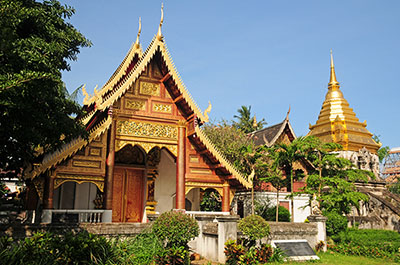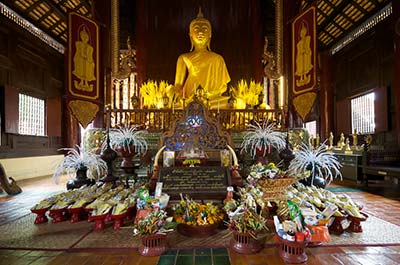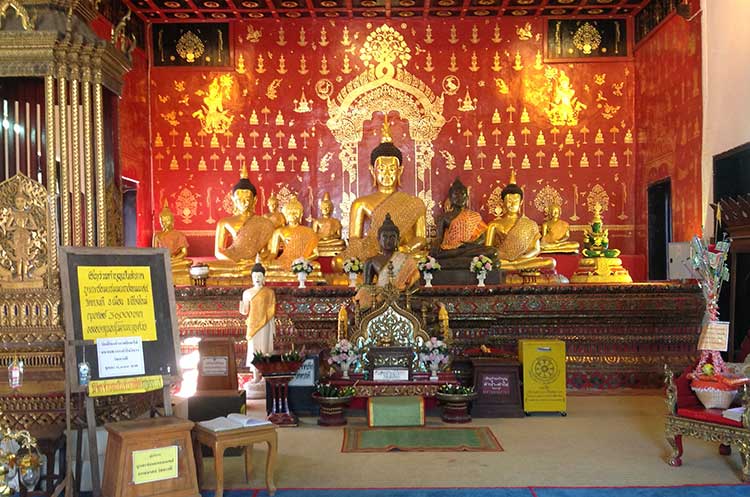
Wat Duang Di
Early 16th Century “Good luck temple”
Chiang Mai
The Wat Duang Di in the center of the old walled town of Chiang Mai comprises of a viharn, an ubosot, a Ho Trai scripture library, a chedi and a Burmese style sala. Its name translate to “Good luck temple”.
Lanna era temple
According to an inscription on the base of one of the Buddha images the temple was founded at the start of the 16th century during the reign of Lanna King Muang Kaew when Chiang Mai had been liberated from Burmese rule. At that time the temple was called Wat Ton Mak Nua.
The Wat Duang Di is mentioned in ancient chronicles that report that in 1761 a monk of the temple named Chao Khihut became the ruler of Chiang Mai.
The temple was renovated in 1819 by Prince Thammalangka, ruler of Chiang Mai.
Viharn or assembly hall
The viharn, a large building with a multi tiered roof is a mix of central Thai and Lanna architecture. It was constructed in the 19th century.
The ends of the golden barge boards are adorned with Naga serpents, while the rooftop is embellished with a golden chofah, an ornament that represents Garuda, the mount of Vishnu. At the top of the stairs to the viharn’s entrance is a pair of small Chinthe, mythological lions that guard the viharn. The front gable is decorated with ornate carvings in flower motifs, a feature of Lanna style temples. Over the East entrance is a triangular gilded wood carving of kanok plants enclosed by mythological Naga serpents.
Principal Buddha image
Inside the viharn seated on a large pedestal surrounded by several smaller Buddha statues is the Wat Duang Di’s principal Buddha image in subduing Mara posture. The back wall is adorned with beautiful gold lacquer Buddhist motifs on a red background.
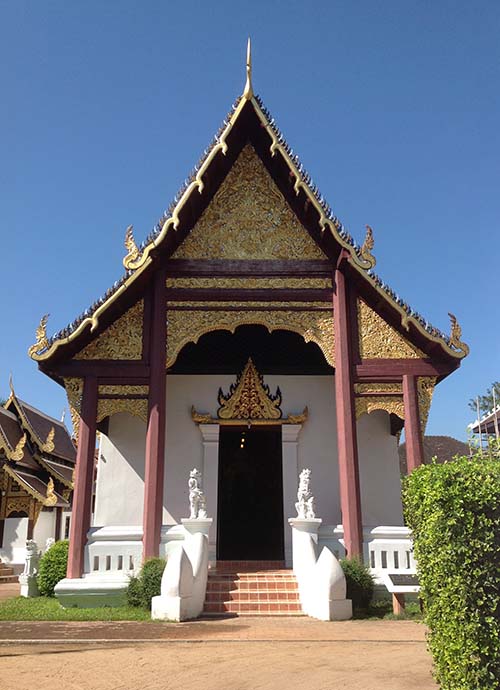
Ho Trai
The main attraction of the Ho Trai, the scripture library building, are its gilded wood carvings and stucco decoration. Constructed in 1829, the building has recently been restored. A stone building enclosed by its own wall, the Ho Trai has a multi tiered roof, topped with a spire and a multi tiered golden hti. Usually locked, the fine stucco work of Lanna flower motifs around the windows and entrance can be viewed from the outside.
Chedi
Enclosed by its own low wall is the Wat Duang Di’s chedi, which enshrines relics. On each of the four corners of the square base stands a statue of an elephant. The chedi consists of a square section with indented corners, several receding octagonal tiers and a small bell topped with a golden spire and a five tiered hti.
Small Lanna style ubosot
Next to the viharn stands a small ubosot, the temple’s ordination hall. The Lanna style wooden building stands on a stone base. The panels on the very elaborate front gable are inlaid with colored glass. The ubosot is usually locked.
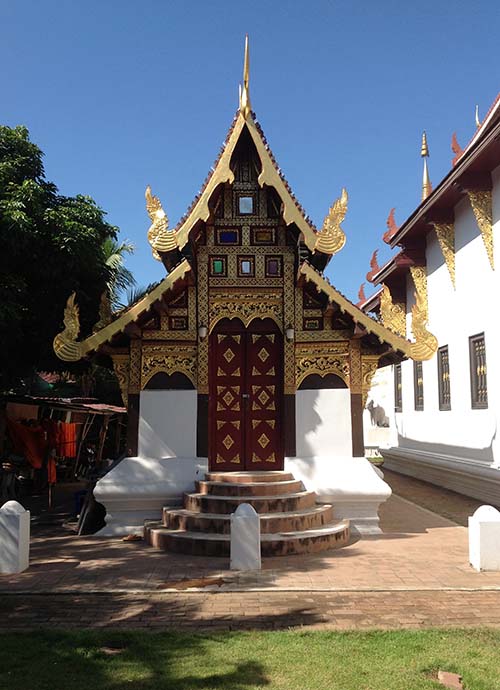
How to get to the Wat Duang Di
The temple is located on Phra Pok Klao road, between Phra Pok Klao road Soi 11 and Soi 12. It is found across the road from Wat Inthakin and the Three Kings Monument near the center of the old walled town of Chiang Mai.
Opening hours
The temple grounds open daily during daylight hours.
Entrance fee
Admission is free.
